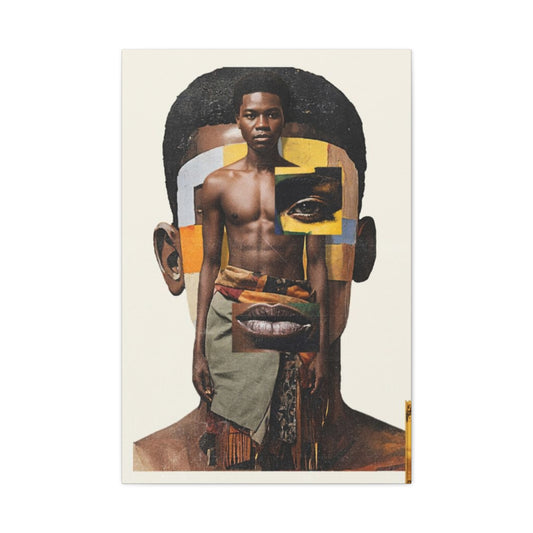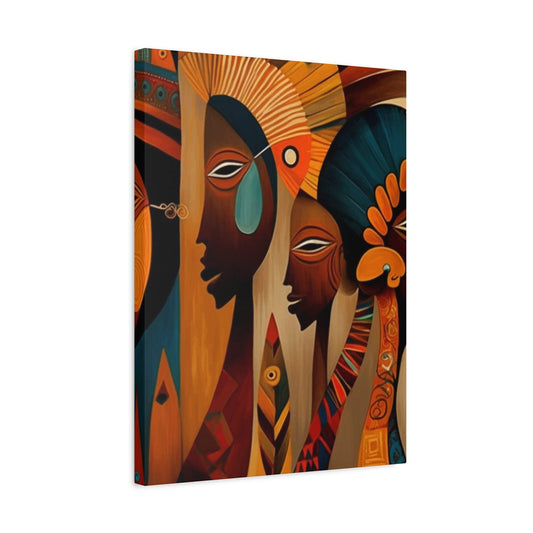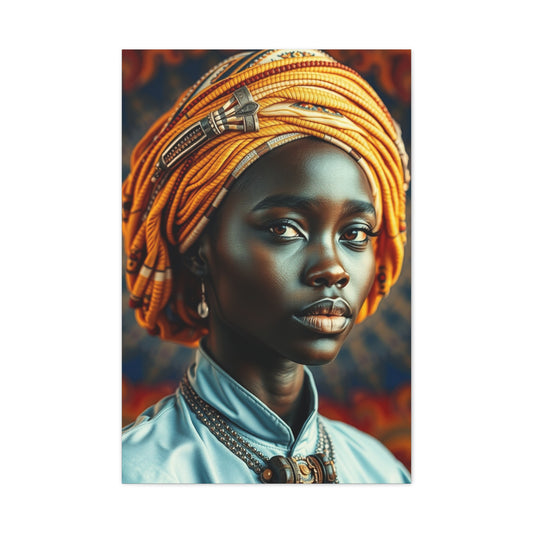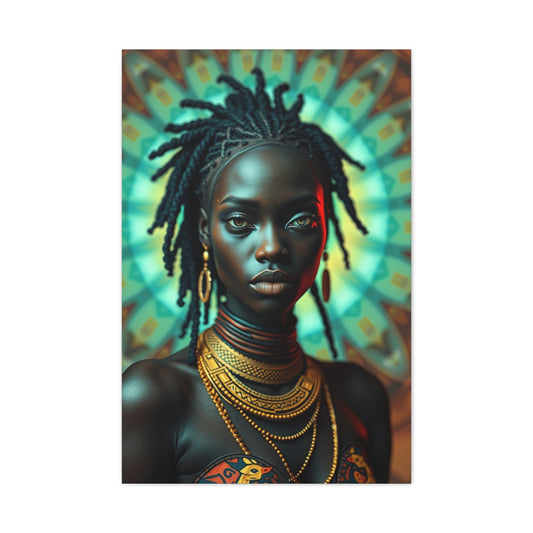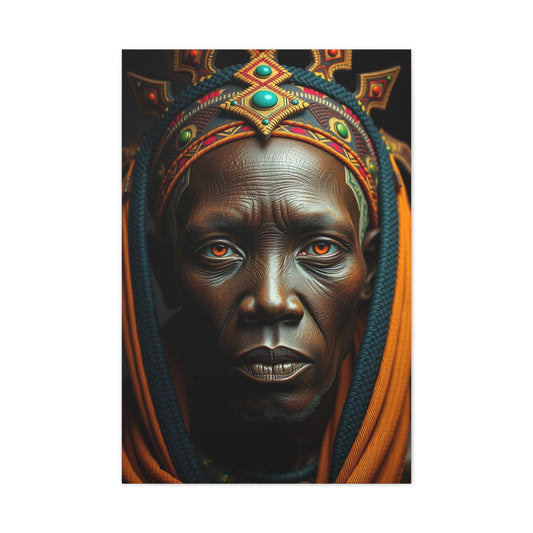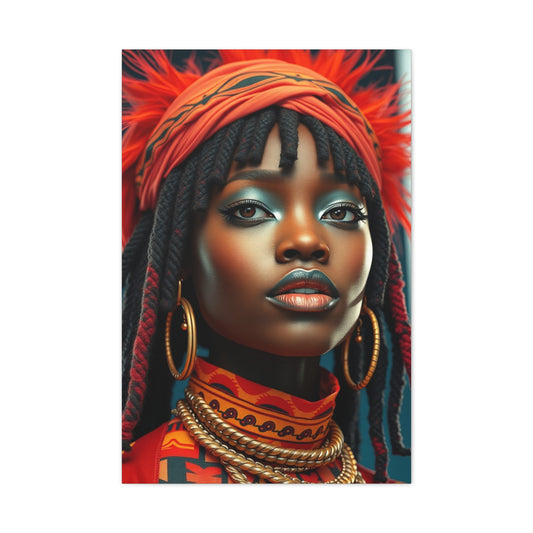Bird photography merges technical mastery with deep emotional resonance. Capturing birds in their natural environment isn’t merely about pointing and shooting—it requires an understanding of light, patience, habitat knowledge, and creative framing. The photographers featured here each bring a unique style and voice to this genre. Their portfolios not only document wildlife but also elevate it into fine art and storytelling.
Whether you're a budding enthusiast or a seasoned wildlife shooter, these ten bird photographers will spark your creativity and inspire your next photographic adventure.
1. Caron Steele – A Conservationist Behind the Lens
Caron Steele’s journey into the world of bird photography is one of curiosity, passion, and profound respect for the natural world. Based in the English countryside of Worcestershire, her life is a seamless integration of science, farming, and visual storytelling. With a degree in zoology from the prestigious Oxford University, Caron’s work stands at the intersection of academic insight and artistic interpretation, resulting in a photographic portfolio that is as informative as it is emotionally stirring.
Unlike many photographers who approach birds as subjects of beauty or novelty alone, Caron sees them through the lens of a biologist. Her images reflect not only what birds look like but who they are—how they live, how they interact, and how fragile their ecosystems can be. This multidimensional understanding allows her to create compositions that are grounded in behavior and habitat, yet rendered with the grace of fine art.
Steele’s early academic background plays a vital role in shaping her perspective. Having studied complex animal behaviors, migratory patterns, and ecological systems, she brings a level of environmental awareness to each frame she captures. Her photography is never isolated from context. Whether she’s photographing swans gliding through a misty lake or a pair of nesting falcons, the emphasis remains on relationship—between the birds themselves, and between the birds and their environment.
Her farm, nestled amid the pastoral beauty of Worcestershire, is more than just a backdrop for her photography—it is a living, breathing studio. The land itself has become a sanctuary where she observes local species throughout the seasons. From the first call of springtime warblers to the delicate rituals of autumnal migrations, Caron has learned to anticipate moments that most others would miss. She sets up her camera not to chase fleeting action, but to document natural cycles with patience and reverence.
|
Related Catagories: |
One of her most admired series focuses on hummingbirds in bloom-laden gardens. These compositions are not mere snapshots but visual essays on movement, light, and color. By using high-speed photography in natural light, Caron manages to freeze the motion of their wings while maintaining the softness of their floral surroundings. Each image captures the ethereal essence of the hummingbird while showcasing the botanical harmony that supports its survival.
Caron’s use of light is another distinguishing factor in her work. Rather than relying heavily on artificial lighting or studio setups, she embraces the changing character of natural light. Early morning mist, golden hour hues, and diffused winter skies all feature prominently in her work. This allows her bird portraits to feel organic and immersive—like scenes from a dream that hover between realism and reverie.
Steele is also a strong proponent of ethical wildlife photography. She carefully avoids practices that disturb her subjects or alter their behaviors. Her approach is slow, observational, and respectful. Instead of baiting or staging scenes, she allows birds to behave naturally and captures them on their terms. This method not only preserves the integrity of her work but also strengthens its authenticity.
Through public exhibitions, online galleries, and educational outreach, Caron uses her photographs as teaching tools. She believes in the transformative power of visual storytelling. Her images are often accompanied by thoughtful captions that offer scientific facts, conservation messages, or anecdotes from the field. This educative element turns a beautiful image into a powerful narrative—one that can influence how people perceive and interact with wildlife.
Her commitment to conservation goes beyond just documentation. Caron regularly collaborates with local wildlife organizations to promote biodiversity on farmland. Her own land is maintained with wildlife corridors, native hedgerows, and protected nesting sites. This hands-on stewardship underscores her belief that art and action must go hand in hand. She doesn’t just photograph birds—she creates environments where they can thrive.
A unique strength in Caron’s portfolio is her focus on bird interactions. Many of her most powerful images feature more than one subject: parents feeding chicks, rivals in aerial combat, or mates engaged in synchronized flight. These scenes convey social structure, emotion, and tension, revealing that birds—like humans—live rich, complex lives filled with communication and ritual.
From an aesthetic standpoint, Caron’s work embraces softness and nuance. She often uses shallow depth of field to isolate her subjects against blurred, painterly backgrounds. Her color grading is subtle and naturalistic, enhancing rather than overpowering. Even in post-processing, she maintains a commitment to authenticity, ensuring that the final image honors the moment as it unfolded in real life.
For aspiring photographers, Caron Steele’s career is a case study in purpose-driven creativity. Her photographs are not just visual pleasures but acts of advocacy. They demonstrate that photography, when approached with intention and humility, can be a force for education, conservation, and emotional connection.
In a world increasingly detached from nature, Caron’s images serve as gentle reminders of what is at stake. They invite us to look more closely, to care more deeply, and to act more responsibly. Her work is not about spectacle—it’s about presence. It asks us to slow down, listen, and see the extraordinary lives unfolding just beyond our windows.
From the marshes of the English countryside to international exhibitions, Caron Steele is shaping the future of bird photography by reconnecting it to its roots: observation, respect, and storytelling. Her contributions are not only visual but philosophical—urging us to reimagine our relationship with the natural world, one frame at a time.
2. Glenn Bartley – Master of Avian Portraiture
Glenn Bartley is a name synonymous with excellence in avian portraiture. Based in British Columbia, Canada, Glenn has carved a niche for himself by focusing on rare and elusive bird species throughout the Americas. His imagery is not just a visual record; it's an intricate dance between biology, art, and relentless perseverance.
A hallmark of Glenn’s photographic journey is his dedication to exploring some of the most remote and biodiverse regions in the Western Hemisphere. He has trekked through the dripping foliage of Ecuador’s cloud forests, navigated the lush wetlands of Costa Rica, and ascended the misty elevations of Peru’s highland marshes—all in search of fleeting glimpses of birds rarely seen, let alone photographed.
His portfolio is a visual encyclopedia of avian diversity. From vibrantly colored tanagers perched on mossy branches to delicate hummingbirds hovering mid-flight, Glenn's attention to detail is unparalleled. Each image boasts exquisite feather resolution, balanced lighting, and deliberate background selection that isolates the subject without compromising its natural environment.
A strong advocate of natural light, Glenn’s bird portraits often radiate with soft, ambient illumination that brings out the iridescence of plumage and highlights subtle textures. He has mastered the art of blending form with function—producing images that are technically pristine and emotionally resonant. Every feather seems placed with intention, every composition crafted with reverence for the subject.
Glenn’s approach to photography is defined by deep planning and adaptability. Unlike spontaneous shooters, he relies heavily on field research, species tracking, and behavioral observation. He often spends days, if not weeks, studying a single species’ habits before attempting a shot. This level of discipline allows him to capture birds in naturally expressive poses—singing, preening, feeding—moments that tell a more intimate story than static perches alone.
One of his most influential contributions to bird photography is his work on tropical and neotropical bird species. In regions like the Amazon Basin, Bartley has documented a wide range of bird life that remains underrepresented in mainstream wildlife media. His commitment to ethical photography is also notable—he avoids baiting, flash usage around sensitive species, or nest disturbance.
Glenn’s imagery has graced the covers and pages of leading wildlife and ornithological publications. In addition to publishing books and guides, he conducts immersive workshops throughout Central and South America, where he trains emerging photographers in field technique, environmental ethics, and post-processing. His educational philosophy revolves around empowerment—giving others the tools to witness, understand, and protect nature through their lenses.
Beyond the frame, Glenn Bartley is a conservation storyteller. His photos often serve as visual anchors for environmental campaigns and scientific studies. By highlighting not just the beauty but the ecological importance of bird species, he raises awareness about deforestation, habitat loss, and climate change. Each image, while aesthetically captivating, carries an undercurrent of advocacy and urgency.
Whether he’s photographing a jewel-toned cotinga high in the canopy or a wren hiding in the reeds, Glenn Bartley’s work exemplifies precision, patience, and purpose. His legacy continues to influence a new generation of bird photographers who aspire not only to take stunning images but to do so with integrity, insight, and impact.
3. Jari Peltomäki – Finland’s Owl Whisperer
In the haunting stillness of Finland’s boreal landscapes, Jari Peltomäki has forged a unique bond with the elusive world of owls and Arctic birds. Known for his deeply atmospheric style and commitment to showcasing Nordic biodiversity, Jari has become one of Europe’s most respected bird photographers. His images, often stark and serene, offer a rare window into the silent poetry of northern wildlife.
With a career spanning more than three decades, Jari brings a storyteller’s sensibility to bird photography. He doesn’t just document species—he chronicles their lives, their habitat, their resilience. His deep connection to the wild comes from a lifetime of immersion in Finland’s forests, marshes, and tundra, where harsh winters and soft summer light frame the natural theater of bird life.
Jari’s specialty lies in capturing owls—a group of birds shrouded in mystique. His images of Great Grey Owls gliding through snowy woods or perched silently at twilight evoke a mythical quality. These aren’t merely portraits—they are moodscapes, drenched in light and shadow, drawing viewers into a quiet, otherworldly realm.
His understanding of owl behavior is extensive. Jari often scouts locations months in advance, tracking nesting sites, learning flight paths, and acclimatizing himself to the environment. He blends in seamlessly with the terrain, waiting in stillness for hours to catch the precise moment of action—a hunt, a stretch of wings, a gaze into the distance. His patience transforms everyday natural scenes into timeless compositions.
Minimalism is a defining feature of Jari's work. He often places birds against pale skies or snowy grounds, using negative space to create a sense of isolation and focus. These compositions reflect the quiet vastness of the Finnish wilderness and allow the viewer to feel the scale and solitude of each setting. Every shot becomes not just a depiction but an experience.
Jari’s photography is also deeply rooted in environmental ethics. He has been a vocal advocate for responsible wildlife photography, emphasizing non-intrusive practices and long-term conservation. As a former Nikon ambassador for Finland, he has used his platform to educate both hobbyists and professionals about the importance of preserving avian habitats.
Beyond his visual work, Jari is an author and public speaker. He has co-published numerous books on birds and photography, many of which serve as vital resources for those looking to understand the ecology of Northern Europe. His lectures, often accompanied by breathtaking visual presentations, weave science, storytelling, and artistry into a compelling narrative.
He is also a leader in ecotourism. Through his company Finnature, Jari has introduced thousands of international photographers and birdwatchers to the beauty of Finnish birdlife. These guided tours not only support local conservation efforts but also help foster a deeper global appreciation for Arctic and sub-Arctic ecosystems.
While many photographers chase exotic species in far-off lands, Jari finds magic in the familiar. He returns again and again to the same forests, the same fields, and watches the same birds through the seasons. This continuity allows him to capture not just isolated incidents but the evolving rhythm of life—a nest becoming a fledgling, a juvenile owl learning to fly, a migration’s start and end.
The emotional depth in Jari Peltomäki’s bird images comes from this long-term intimacy. They are the product of observation, respect, and a genuine reverence for the wild. In a world filled with noise, his work invites us into silence—not empty, but rich with natural presence.
Jari’s influence extends far beyond Finland. His exhibitions and collaborations with international organizations have brought Nordic bird species to global audiences. His photographs continue to shape how we view and value the often-overlooked birdlife of northern latitudes.
In every snowy feather and silent wingbeat, Jari Peltomäki reveals a world of understated beauty. His photography reminds us that some of the most profound encounters with nature happen not through spectacle, but through stillness, through waiting, and through the art of seeing deeply. For anyone seeking inspiration rooted in patience and poetic simplicity, Jari’s work offers an enduring beacon.
4. Bence Máté – Creative Genius of Action Shots
Bence Máté is widely regarded as a trailblazer in action-oriented bird photography, renowned for revolutionizing the way wildlife, particularly avian behavior, is documented. Hailing from Hungary, Bence’s work has elevated the visual storytelling of birds in motion to an art form—infused with dynamism, cinematic quality, and often a surreal level of proximity and detail. He doesn’t just photograph birds; he immerses viewers in their dramatic world of flight, rivalry, and interaction.
One of the defining characteristics of Bence’s technique is his masterful use of remote-controlled cameras and customized hides. While many photographers rely on zoom lenses and distant vantage points, Bence positions his equipment right within the birds' natural environment, allowing for intimate, wide-angle compositions that give the viewer a bird’s-eye view—literally. This innovation creates unique images that would be nearly impossible to capture through conventional means.
His hide systems, some of which are floating or submerged, are not merely tools—they are expressions of his philosophy that one must become part of the environment to truly understand and honor its rhythm. By designing and constructing these hides himself, Bence ensures they’re both functional and ethically sound, allowing wildlife to behave undisturbed while he works invisibly in the background.
His images are lauded for their energy and emotional depth. Whether it’s herons clashing mid-air, kingfishers diving in perfect arcs, or birds reacting in micro-moments of tension, Bence captures expressions and gestures that most would miss in a blink. His skill lies not only in observing these fleeting interactions but in anticipating them—understanding avian behavior to such an extent that he can predict movement before it occurs.
Bence’s photography thrives in the golden and blue hours, where natural light adds a layer of mood and intensity to his compositions. Rainstorms, reflections, muddy splashes, snow flurries—these environmental elements become active players in his visual stories. Each frame has texture, mood, and motion that makes it feel more like a living scene than a static image.
His work has received widespread recognition. He was named Wildlife Photographer of the Year by the Natural History Museum in London, and his photographs have been published in leading wildlife magazines and exhibitions worldwide. Despite the acclaim, Bence remains grounded in his mission: to bring people closer to the wild world and inspire both wonder and conservation.
What separates Bence from others is his seamless blend of artistry and fieldcraft. His images are technically meticulous, yet emotionally raw. He elevates fast-paced bird behavior to an aesthetic experience, where movement becomes a language of survival, courtship, and dominance. His photography not only captures beauty—it communicates narrative.
In addition to his personal work, Bence is deeply involved in teaching and mentorship. Through international workshops and lectures, he encourages emerging photographers to think beyond conventional techniques. He emphasizes immersion, ethics, and innovation—principles that have shaped his own journey and continue to influence the global bird photography community.
Above all, Bence Máté’s impact on bird photography is transformative. He has shown the world that birds are not passive subjects perched serenely in branches but active, expressive creatures caught in the raw theater of nature. His legacy is one of bold exploration, visual drama, and a deep respect for the wild.
5. Arthur Morris – A Pioneer in Bird Photography Education
Arthur Morris is often described as a living legend in the realm of bird photography—a pioneering educator, prolific creator, and inspirational figure for both novice and seasoned photographers alike. With a career spanning over three decades, Arthur has influenced more photographers through his teaching, writing, and imagery than almost anyone in the field.
His photographic journey began with a love for birds and a commitment to sharing that passion with the world. As a former elementary school teacher, Arthur brought his natural talent for education into the photographic space, developing instructional resources that are both approachable and highly effective. His philosophy combines clarity, technical precision, and an unwavering emphasis on ethical field practices.
|
Related Catagories: |
Arthur’s bird photographs are widely celebrated for their impeccable detail, composition, and control of light. Whether it’s a backlit tern in flight or a sandhill crane in morning fog, his images evoke a painterly quality without straying from the realism and accuracy that defines great wildlife photography. His preferred style often features clean backgrounds, minimalist compositions, and sharp focus, allowing the viewer to connect directly with the bird without visual distraction.
With over 11,000 published images, Arthur’s work has appeared in major wildlife magazines, books, calendars, and scientific journals. Yet it’s his dedication to education that has truly defined his career. His “Birds As Art” blog and instructional eBooks are treasured resources in the bird photography community, covering everything from exposure and focus techniques to bird behavior and compositional nuance.
Arthur is known for pioneering the use of fill flash in outdoor bird photography—a technique that allows subtle enhancement of shadowed plumage without overpowering the natural ambiance. His knowledge of light behavior and his ability to adapt techniques for real-world field conditions have helped thousands of photographers take their work from amateur to professional levels.
He also advocates passionately for ethical bird photography. Through his workshops and writings, Arthur emphasizes the importance of respecting wildlife boundaries, avoiding stress-inducing behaviors, and photographing birds in ways that promote conservation, not intrusion. His ethos is simple yet profound: photography should benefit the subject, not exploit it.
One of the enduring themes in Arthur’s work is storytelling. He doesn’t just aim to capture rare birds but to portray familiar species in unfamiliar ways—finding magic in everyday encounters. A gull at the beach, a pelican in flight, a sparrow in morning light—each becomes a subject worthy of awe and attention in his frame.
Arthur has mentored countless photographers through his workshops across the United States and abroad. These immersive programs are renowned not just for their technical rigor but also for their emphasis on field ethics, observational skills, and artistic vision. Students frequently speak of his generosity, patience, and knack for identifying exactly what a developing photographer needs to evolve.
Despite decades of experience, Arthur continues to shoot regularly, constantly refining his craft and embracing new technologies. He adapts to changes in gear and technique without losing the timeless quality that makes his images universally resonant.
What makes Arthur Morris truly extraordinary is his balance of discipline and joy. His photos are rooted in years of technical practice, yet they retain the sense of wonder that first brought him into the field. He photographs birds not just to display them, but to celebrate them—to help others see what he sees: poetry in feathers, elegance in flight, and quiet stories unfolding in the wild.
Arthur Morris has set the gold standard for bird photography as both an art and a craft. His body of work, his commitment to teaching, and his respect for the natural world continue to influence and inspire a global community of nature lovers and image-makers. For anyone entering the world of bird photography, his guidance serves not only as a technical foundation but as a philosophical compass—one rooted in patience, purpose, and the pursuit of visual truth.
6. Alejandro Prieto – Telling Conservation Stories Through Birds
Alejandro Prieto is a Mexican photographer whose work transcends traditional wildlife imagery by weaving compelling conservation narratives through each frame. With a foundation in both fine art and environmental journalism, Prieto uses his camera not only as a tool for artistic exploration but also as a means of advocacy for the fragile ecosystems of Latin America.
His bird photography is often set against striking backdrops that tell stories beyond the immediate subject. Whether it’s a flock of flamingos reflected perfectly in a salt flat’s mirror-like surface or a single endangered parrot framed by urban sprawl, his images suggest a deeper message: the tension between nature and human expansion. Rather than separating wildlife from the realities of human presence, Prieto’s lens explores their interaction—sometimes harmonious, often conflicted.
What distinguishes Alejandro Prieto from his contemporaries is his commitment to photographing the often-unseen consequences of environmental degradation. He captures birds that reside in threatened habitats—coastal mangroves affected by tourism, desert wetlands encroached by agriculture, and cloud forests scarred by logging. These aren't just aesthetic landscapes; they are ecological battlegrounds, and his photos serve as a visual record of what’s at stake.
A signature theme in Prieto’s work is his portrayal of fragility—not in the sense of weakness, but in the sense of delicate resilience. His compositions of flamingos, for example, seem almost surreal in their symmetry and calm, yet they exist in regions threatened by pollution and climate change. His ability to contrast visual serenity with ecological urgency creates an emotional duality that resonates deeply with viewers.
Prieto has received widespread recognition for his ability to merge storytelling with aesthetic excellence. He has been honored in the World Press Photo competition, among other accolades, for his conservation-themed projects. One of his most impactful series centers on the border wall between Mexico and the United States, where he documents how migratory bird species and other wildlife are affected by human barriers. His imagery from this series speaks volumes without needing a single caption—it reveals how a line drawn by people can disrupt ancient natural routes followed by animals for generations.
His fieldwork is as rigorous as it is creative. Prieto spends long periods in remote, often inhospitable environments, using blinds and low-profile setups to observe bird behavior without interference. He combines high-resolution digital equipment with minimalist post-processing to ensure the authenticity of the visual experience. His images carry the signature of realism—every feather, drop of water, and blade of grass rendered with crystalline clarity.
But beyond technique, Alejandro is a master of timing and patience. He waits for perfect light, behavioral cues, and contextual elements to converge. The resulting images are more than portraits; they are frames frozen in harmony with nature’s fleeting rhythms. His hummingbirds in flight, for example, are caught with wings spread in a sculptural stillness, framed by tropical foliage that seems almost painted in light.
Prieto also believes in education as a pillar of conservation. He regularly conducts workshops in biodiversity hotspots, not just to teach photography but to foster appreciation for ecosystems under threat. His approach is holistic—combine art, science, and outreach to form a deeper, more sustainable impact.
Through exhibitions, published works, and social media, Alejandro Prieto reaches a global audience while staying deeply rooted in the landscapes and communities he documents. His bird photography, striking in its visual appeal, becomes a conduit for urgent environmental discourse. He doesn’t just show us birds; he shows us their worlds—worlds we have a responsibility to protect.
7. Andy Rouse – Transforming Passion Into Impactful Imagery
Andy Rouse is a name that resonates with vibrancy, risk-taking, and unfiltered passion in the realm of wildlife photography. Based in the United Kingdom, Andy is known for his daring yet respectful approach to capturing animals, especially birds, in their most revealing and emotive states. He’s not just a photographer; he’s a storyteller who ventures deep into nature’s drama to reveal the awe that many never experience firsthand.
After walking away from a stable corporate job at the age of 32, Andy made a bold leap into the unpredictable world of wildlife photography—a move that would redefine his life and inspire thousands to pursue their creative calling. That sense of fearlessness is a recurring theme in his work. Whether he’s navigating Arctic fjords or scaling rugged cliff sides for a glimpse of nesting seabirds, Andy doesn’t shy away from challenge. In fact, he embraces it.
His bird photography is marked by an intense level of intimacy and immersion. Andy gets physically close to his subjects, often using remote-controlled systems and camouflaged hides to photograph without causing disturbance. The results are stunning: eagles mid-pounce, owls turning toward the camera in mid-flight, or puffins framed against windswept skies. These are not just documentation—they are narrative moments, full of movement, emotion, and atmosphere.
What sets Andy apart is his cinematic vision. His compositions often resemble stills from a wildlife documentary—tight framing, dramatic backdrops, and action caught at just the right moment. He makes deliberate choices about lighting, angles, and perspective to ensure each image tells a story. Whether it’s dawn light warming the feathers of a kingfisher or storm clouds casting shadows over a falcon’s perch, Andy uses nature’s palette to evoke mood and meaning.
His portfolio spans continents, from rainforests and grasslands to tundras and coastlines. Yet birds remain a favorite subject. Andy is particularly skilled at photographing raptors and owls—species known for their elusive and solitary behaviors. His work with the barn owl is especially iconic, capturing their silent glide and piercing gaze with a sense of reverence that never feels staged or artificial.
Education and outreach are major components of Andy’s philosophy. Through numerous books, presentations, and photo tours, he shares his knowledge and encourages others to explore the wild ethically and artistically. His workshops emphasize respect for wildlife, storytelling in composition, and the use of natural light—all principles that define his own practice.
Andy is also a vocal advocate for conservation. His photographic projects often spotlight species under threat or habitats on the brink of collapse. By focusing attention on the beauty and vulnerability of these places, he aims to stir both wonder and action. One notable campaign involved documenting the effects of agricultural expansion on bird populations in the UK, using his images to engage policy discussions and grassroots initiatives.
In the realm of awards, Andy has been recognized with more than 24 international photography honors. But perhaps more important than any trophy is his impact on aspiring photographers. Many credit him with changing how they see nature—not just as a subject to be captured but as a living world to be honored and protected.
Even after decades in the field, Andy remains dynamic and adaptable. He experiments with drone photography, slow-motion video, and other evolving technologies, always looking for new ways to tell stories more effectively. His passion remains fresh, his energy undiminished. For him, bird photography is not a genre—it’s a way of life.
Andy Rouse's work reminds us that the most impactful images are often born from empathy, patience, and an unshakable belief in the importance of nature’s voice. His photography doesn't just show us what birds look like—it reveals what they feel like to witness, to be near, to understand. It turns a passing glance into a lifelong memory.
8. Alan Murphy – Advocate and Artist of Bird Photography
Alan Murphy’s work is a masterclass in visual design. Based in Texas, Alan specializes in songbirds and raptors, capturing them in artistically composed frames that often include natural perches and intentional backgrounds. He builds these scenes ethically, ensuring the welfare of his subjects while crafting a beautiful and clean aesthetic.
9. David Tipling – Storytelling Through Bird Imagery
British photographer David Tipling brings an editorial eye to bird photography. His work is documentary in spirit but poetic in execution. Whether chronicling migration routes or capturing penguins in icy Antarctica, David’s photographs resonate with narrative depth. He’s contributed to over 40 books and frequently collaborates with conservation organizations.
10. Gregory Basco – Tropical Birds Through a Creative Lens
Gregory Basco, based in Costa Rica, is renowned for his richly colored images of tropical bird species. His style merges documentary realism with fine art composition, often using natural backlighting and silhouettes to craft visually dramatic scenes. His work with toucans, macaws, and hummingbirds brings out the lush biodiversity of the neotropics.
Final Thoughts: Let These Bird Photographers Inspire Your Next Shot
Exploring the portfolios of these talented bird photographers isn’t just a visual treat—it’s a powerful learning experience. Each photographer listed here has developed a distinctive voice, blending creativity, technical skill, and environmental awareness. Their work challenges conventional approaches to wildlife photography and showcases how a subject as common as a bird can be rendered in countless breathtaking ways.
These artists use everything from cutting-edge equipment to patient observation to capture the most authentic and awe-inspiring moments in the wild. Their photos go beyond aesthetics—they build bridges between humanity and nature. They prompt us to slow down, to watch more closely, and to appreciate the intricate lives of the creatures that fill our skies and forests.
For anyone looking to improve their bird photography, there’s immense value in studying these professionals: how they frame their subjects, how they use light, and how they interpret the natural world. But perhaps most importantly, they teach us that the best photographs come not from gear or technique alone, but from a deep respect for the wild.
So, the next time you step outside with your camera, remember the artistry, commitment, and vision these photographers bring to the field. Let their stories and visuals serve as a wellspring of inspiration as you embark on your own journey into the fascinating world of bird photography.










